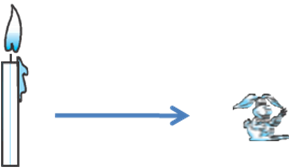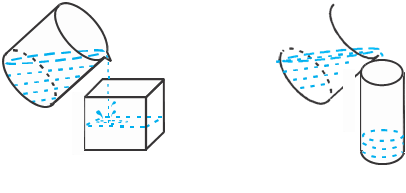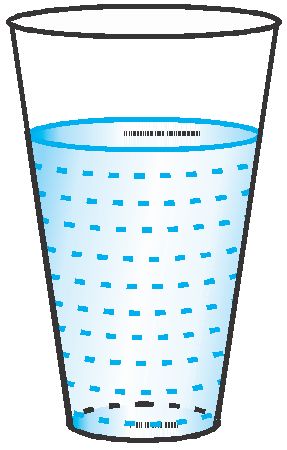Introduction
- Books Name
- Kaysons Academy Maths Foundation Book
- Publication
- Kaysons Publication
- Course
- JEE
- Subject
- Maths
Chapter -13
Surface areas and volumes
Introduction
From Class IX, you are familiar with some of the solids like cuboid, cone, cylinder, and sphere (see Fig.). You have also learnt how to find their surface areas and volumes.

In our day-to-day life, we come across a number of solids made up of combinations of two or more of the basic solids as shown above.
Surface Area of a Combination of Solids
Let us consider the container seen in Fig. How do we find the surface area of such a solid? Now, whenever we come across a new problem, we first try to see, if we can break it down into smaller problems, we have earlier solved. We can see that this solid is made up of a cylinder with two hemispheres stuck at either end. It would look like what we have in Fig., after we put the pieces all together.

If we consider the surface of the newly formed object, we would be able to see only the curved surfaces of the two hemispheres and the curved surface of the cylinder. So, the total surface area of the new solid is the sum of the curved surface areas of each of the individual parts. This gives,
TSA of new solid = CSA of one hemisphere + CSA of cylinder + CSA of other hemisphere
Where TSA, CSA stand for ‘Total Surface Area’ and ‘Curved Surface Area’ respectively.
Let us now consider another situation. Suppose we are making a toy by putting together a hemisphere and a cone. Let us see the steps that we would be going through.
First, we would take a cone and a hemisphere and bring their flat faces together. Here, of course, we would take the base radius of the cone equal to the radius of the hemisphere, for the toy is to have a smooth surface. So, the steps would be as shown in Fig.

At the end of our trial, we have got ourselves a nice round-bottomed toy. Now if we want to find how much paint we would require to colour the surface of this toy, what would we need to know? We would need to know the surface area of the toy, which consists of the CSA of the hemisphere and the CSA of the cone.
So, we can say:
Total surface area of the toy = CSA of hemisphere + CSA of cone
Now, let us consider some examples.
Volume of a Combination of Solids
- Books Name
- Kaysons Academy Maths Foundation Book
- Publication
- Kaysons Publication
- Course
- JEE
- Subject
- Maths
Volume of a Combination of Solids
In the previous section, we have discussed how to find the surface area of solids made up of a combination of two basic solids. Here, we shall see how to calculate their volumes. It may be noted that in calculating the surface area, we have not added the surface areas of the two constituents, because some part of the surface area disappeared in the process of joining them. However, this will not be the case when we calculate the volume. The volume of the solid formed by joining two basic solids will actually be the sum of the volumes of the constituents, as we see in the examples below.
Conversion of Solid from One Shape to Another
We are sure you would have seen candles. Generally, they are in the shape of a cylinder. You may have also seen some candles shaped like an animal (see Fig.). How are the made? If you want a candle of any special shape, you will have to heat the wax in a metal container till it becomes completely liquid. Then you will have to pour it into another container which has the special shape that you want.

For example, take a candle in the shape of a solid cylinder, melt it and pour whole of the molten wax into another container shaped like a rabbit. On cooling, you will obtain a candle in the shape of the rabbit. The volume of the new candle will be the same as the volume of the earlier candle. This is what we have to remember when we come across objects which are converted from one shape to another, or when a liquid which originally filled one container of a particular shape is poured into another container of a different shape or size, as you see in Fig.
To understand what has been discussed, let us consider some examples.

Frustum of a Cone
In section 13.2, we observed objects that are formed when two basic solids were joined together. Let us now do something different. We will take a right circular cone and remove a portion of it. There are so many ways in which we can do this. But one particular case that in which we can do this. But one particular case that we are interested in is the removal of a smaller right circular cone by cutting the given cone by a plane parallel to its base. You must have observed that the glasses (tumblers), in general, used for drinking water, are of this shape. (See Fig.)


 Kaysons Publication
Kaysons Publication
